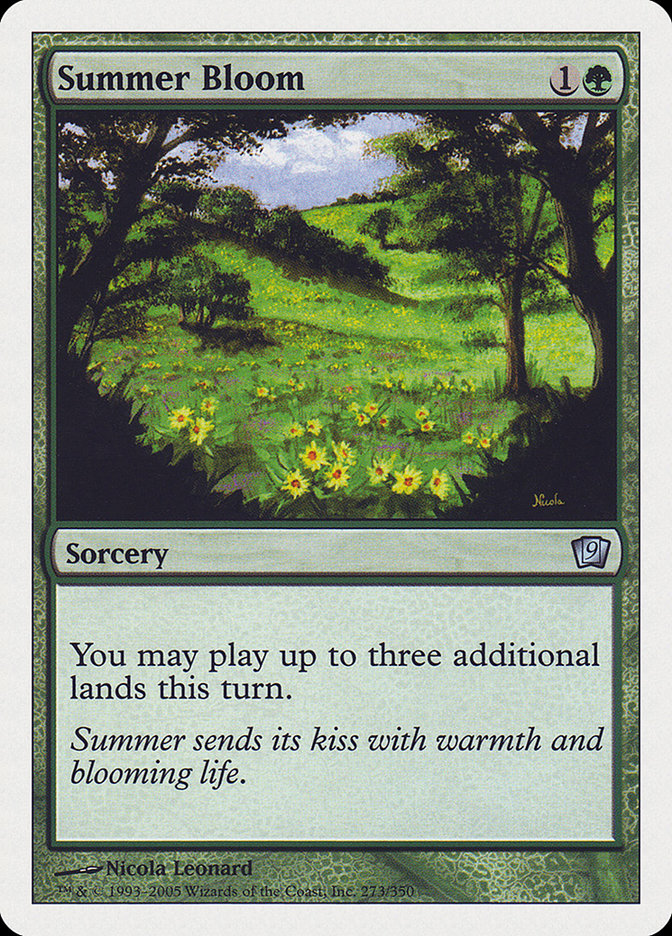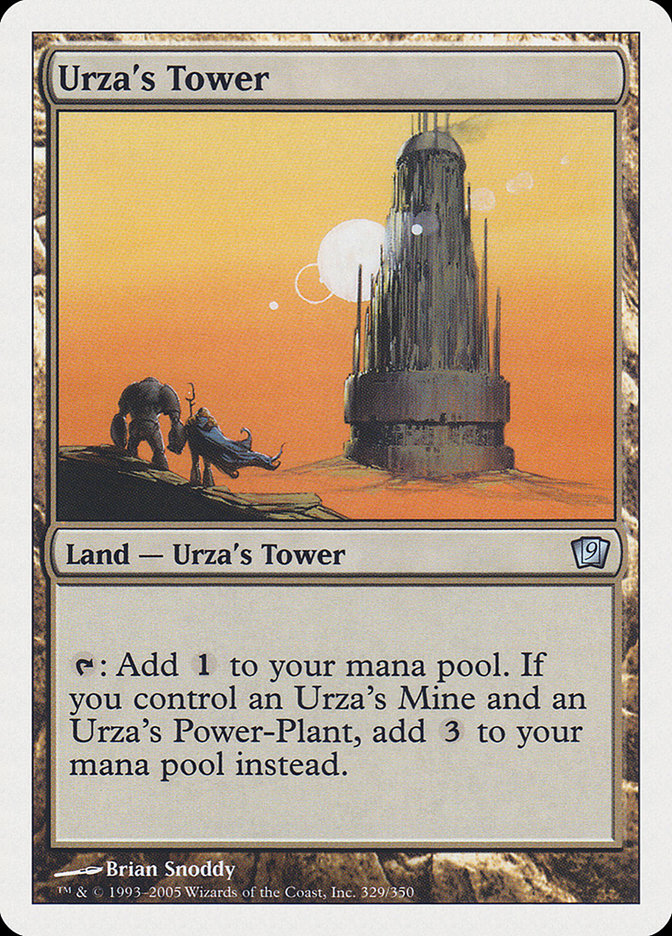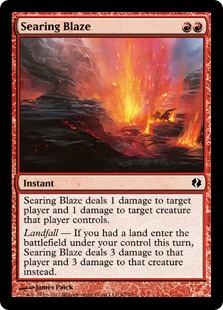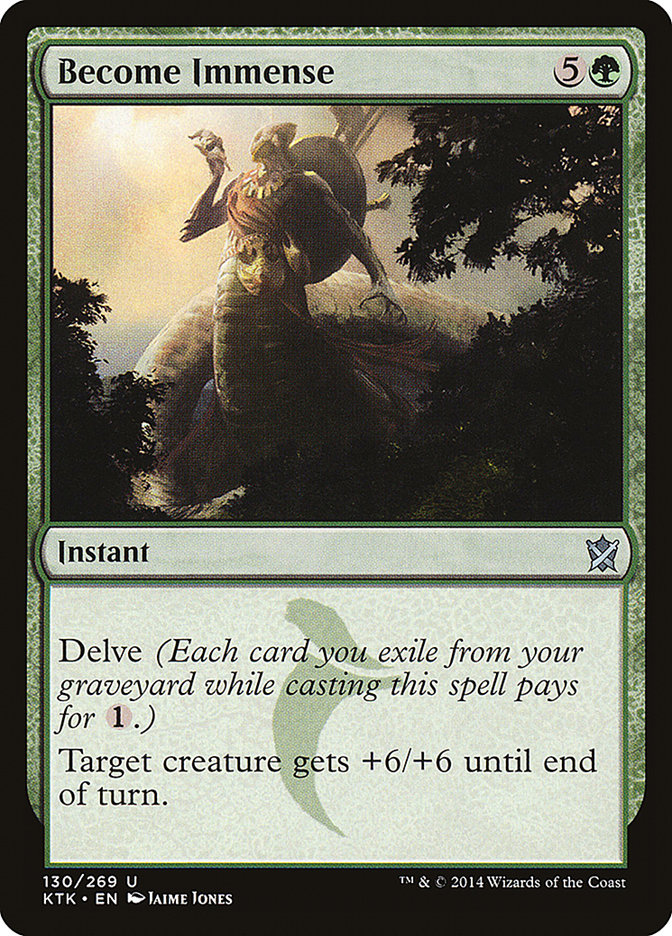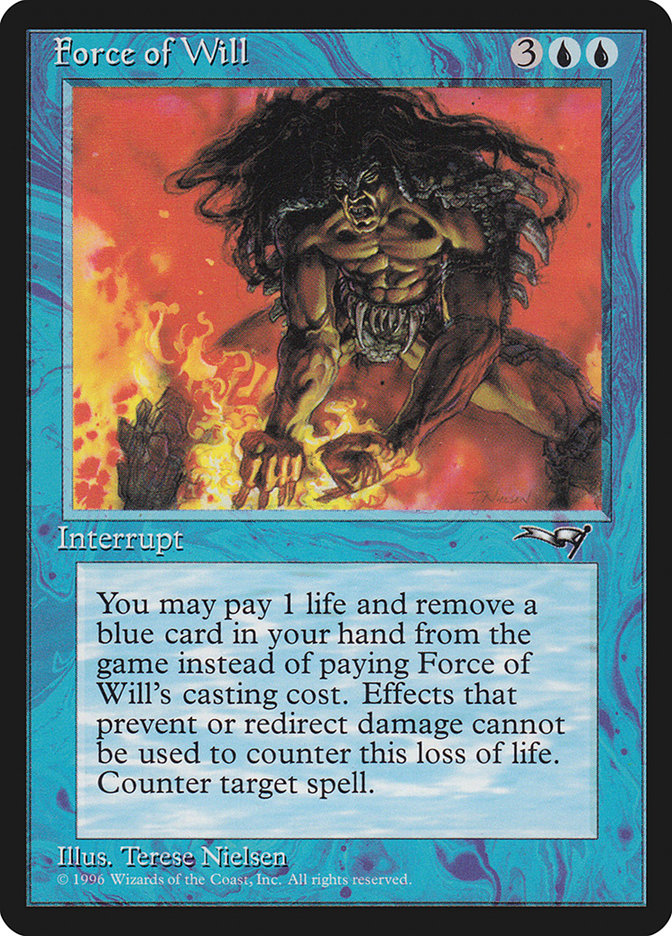Last Friday night, we were given the updated ban list for Modern. See ya, Summer Bloom. No surprises there. Amulet Bloom was way too good. The only thing keeping the deck from being completely dominant in the format was its high skill floor. To really be able to pilot the deck effectively, the average person needed dozens of hours of practice and familiarity, something most people were just unable or unwilling to commit to. Make no mistake, though: Amulet Bloom, when piloted at full capability, was too far ahead of the pack to be acceptable in a healthy Constructed format. It’s OK for a deck to be as fast as Amulet Bloom; it is not OK for a deck as resilient as Amulet Bloom to be so fast.
Goodbye, Summer Bloom, and good riddance. You will not be missed.
Splinter Twin, however, is a bit more of a surprise.
Twin has been a mainstay in the modern format since its inception. It’s won multiple Pro Tours and Grand Prix, and the format will definitely be shaken up by the banning of Splinter Twin. It’s no question that Twin in its various forms was a dominant deck in Modern, but I don’t think it was oppressive like Amulet Bloom should have been.
The thing that made Splinter Twin so good in Modern was that it got to be both an interactive deck and a linear proactive deck, depending on your draw and the matchup. In a format where the linear elements of the format are significantly stronger than the interactive elements, this is very strong. If you can afford to interact with your proactive opponent, you can play a longer game where you win over a course of many turns and decisions. If you can’t afford to interact with your opponent, you can just end the game as quickly as possible with a Turn 4 Twin combo. Twin never felt too good to ban to me, but it had a very impressive resume during its run in Modern, and removing the deck will surely shake things up.
While both of these bans will make for a fresh format, and I am eager to see what will be brought to the table at Pro Tour Oath of the Gatewatch in a few weeks, I doubt that these changes will really do much to fix Modern. The truth of the matter is that the linear elements are way more powerful than the interactive ones.
Tron, Burn, Infect, Affinity, Abzan and Jund, Twin, and Amulet Bloom made up the top tier of Modern decks before the ban. That’s five linear proactive decks, a reactive creature deck in Jund/Abzan, and a switch hitter in Twin. When you drop into the second tier, you start see a lot of the same: a reactive deck here or there, but for the most part, the format is full of decks trying to do the thing their deck does as best it can. While having a few of these decks in a format is a good thing, when everyone in the format has come to the conclusion that trying to ignore your opponent is the best strategy, Modern tournaments start to look a lot like drag races. There are a ton of games where the cards were the only thing that mattered, and when that happens too much, it leaves a bad taste in the mouths of many competitive players.
That being said, I do think Modern is an excellent format right now for Regular REL and casual play. There are a ton of cool decks in Modern and it’s fun getting to bash your favorite deck into other people’s favorite decks. It’s also good for The SCG Tour®. However, I wouldn’t really be interested in playing Modern for as stakes as high as a Pro Tour or even at an #SCGINVI the way the format is currently crafted.
So About Legacy…
So what would have to happen for Modern to be a better Professional REL format? The scales of linear to interactive decks are tipped way in favor of linear. We need to do something that would make interactive decks a lot stronger. I think we should take a look at Legacy. Specifically, the two biggest differences between Modern and Legacy are Force of Will and Brainstorm.
Force of Will is often referred to the glue that holds Legacy together. Without Force of Will existing, the format would be miserable as ultrafast linear decks like Belcher, Storm, and All Spells would wreak havoc on the format. Simply the existence of this card relegates most of these decks to the fringes of the format.
While the things you can currently do in Modern aren’t nearly as objectively powerful as the things you can do in Legacy, they are certainly strong in their own right. And because Modern is a non-rotating format, they are not going to be getting any weaker without a steady stream of bans. While constant bans are one way to provide maintenance to a format, it feels like breaking the spirit of the format a bit too much; people get to play their favorite deck, and it will never rotate.
Well, sorry to the Twin fans out there, because your deck just rotated out.
Force of Will might be too powerful for Modern. I would be interested in what a tournament would look like with Force of Will being legal. It’s entirely possible that the card would only add to the degeneracy of the format instead of curbing it, but the deckbuilding restraint Force has of having to play twenty-something blue cards in your deck would significantly limit the amount of places you could play the card. Even if Force isn’t the right answer the format needs, the point stands that countermagic is pretty underpowered in Modern. Dispel and Remand were the two best counterspells before the bans, both of which were best used as protection for linear proactive strategies. Modern needs a better reactive counterspell.
Also an important thing to note is that putting the card Force of Will into Modern would be extremely difficult to do. A Standard format where the card wouldn’t be oppressive would look very strange, and just adding the card artificially seems horrible for both economic and procedural reasons.
Brainstorm should not exist in Modern. Absolutely not. What I want to do is talk about, though, is what a card like Brainstorm does to a format. The two biggest things specifically are increasing the consistency of decks in the format and drastically increasing the number of decision points and options during those decision points in a game of Legacy.
Blue cantrips in general are so powerful because they add consistency to a deck. Brainstorm, the iconic cantrip of Legacy, is incredibly good at this. So good, in fact, that it is by far the most powerful thing going on in the format and well over two-thirds of the decks in Legacy are held together by this card. Modern’s best cantrip, Serum Visions, isn’t in the same league as Brainstorm. Brainstorm gets you three new cards at instant speed immediately. Serum Visions gets you one card at sorcery speed and then gives you options on your next draw. Brainstorm lets you find the answers you need much more efficiently than Serum Visions, and as a result, interactive Legacy decks are much more effective than they are in Modern.
The other thing Brainstorm does is make the games in Legacy much more skill-testing. Brainstorm is really, really hard to play well. Serum Visions, while not an easy card to play right, has much fewer options once cast, and because it’s a sorcery, it’s much more straightforward in when you should cast it. Having a more challenging and powerful cantrip in Modern would make for a lot more interesting games.
Of course, there is a different option we could look to for Modern: just don’t do anything. Honestly, as it is the format is very healthy as a smaller-level format. The decks are fun, the games are straightforward, and cool stuff is usually happening every game. As a competitive format, however, I think the interaction and decision points per game need to be brought up a bit.


